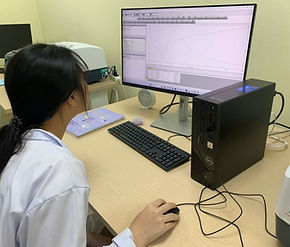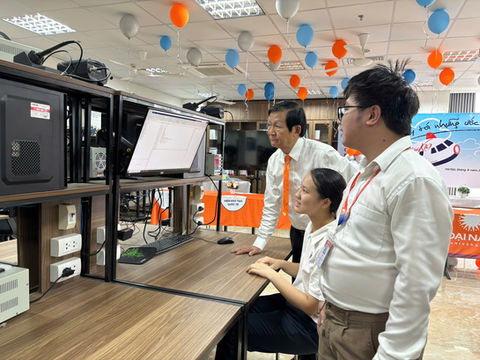
The Leap
From theory to touch.
When I first opened a physics book, I thought: “Cool, so this is just math but with more drama.”
Formulas everywhere. Numbers doing backflips. My brain is blue-screened. But the deeper I went, the more I realized that physics isn’t just about solving equations, it’s about solving life.
It’s in the stars, the sound of your heartbeat, even in the way Wi-Fi somehow stops working when you need it most.
Three internships, an astronomy training opportunity, and one tiny personal project later made me stop seeing science as something locked in a lab. It’s messy, human, and ridiculously beautiful.
Because when knowledge meets curiosity, even gravity can’t pull you down.



Intern, Institute of Physics,
Vietnam Academy of Science and Technology (VAST)
Here, I experienced my first professional research environment, where every measurement required precision down to the thousandth. I learned to use optical and electronic instruments, observe material reactions under laser light, and realized that the formulas in books are just the beginning, while making them work in reality is what true science means.
Long afternoons in the lab taught me patience and attention to detail, as well as the understanding that science is often a series of mistakes, but meaningful ones.
Intern, Nano Materials Research Department,
Hanoi National University of Education
I chose this path because I wanted to bring physics closer to medicine, where knowledge can save lives. That was when I began studying gold nanoparticles and their potential application in photothermal cancer therapy. At first, I could not understand why my data deviated from the model. It took me an entire week to realize that the error came from something seemingly minor, the position of the sensor. Yet those small mistakes taught me that science is not for the impatient, but for those humble enough to learn from their own failures.
Intern, Department of Semiconductor Technology, Dai Nam University
This was the time I was first introduced to chip manufacturing and semiconductor technology, an entirely new field for me. If at the Institute of Physics I learned about principles, here I learned to think like an engineer how nanomaterials, light, and electronics interact to create a functional system.
Holding the first wafer I helped measure was an indescribable joy, as if all the theories I had studied suddenly became tangible.
Astronomy Teacher, National Astronomy Olympiad Team
(IOAA 2025)
I have always been fascinated by the sky. As a child, I loved watching the stars; as I grew older, I wanted to understand why they shine. When I was selected as a trainer for the National Astronomy Olympiad Team (IOAA 2025), I realized that teaching is not only about sharing knowledge but also about inspiring others to believe in what they once thought impossible.
During the training at the Nha Trang Observatory, I guided students in observing the night sky, reading star maps, and patiently waiting for the moment when a planet appeared. Standing on a windy hill at midnight, I learned that astronomy teaches not only how to look far but also how to stay patient.






Personal Project, Robot Hand of Hope
Perhaps the project that moved me most was Robot Hand of Hope, a robotic hand capable of performing American Sign Language (ASL). The idea came from a field trip to Yen Bai, where I met a family affected by hereditary deaf-mutism. They could neither speak nor hear, and no one around them could understand their language. I was haunted by the mother’s eyes, filled with both the desire to communicate and the pain of helplessness. I asked myself: if physics can cure cancer, why can’t it help the deaf communicate with the world?
From that question, I began designing a robotic hand that could interpret voice or text commands into sign language gestures. The process was full of failures, burnt motors, code errors, hardware glitches yet every small movement of the robot’s fingers renewed my belief in the purpose behind it.
Hand of Hope is more than just a piece of technology. It is a hand reaching out to connect those forgotten by the world.
Looking back , from laser measurements in research labs, to stargazing nights by the Nha Trang sea, to the moment my first robot came to life, I realized that science is not only about understanding the world, but about making it more humane. For me, “application” means not just creating machines, but creating connections between knowledge and humanity.














